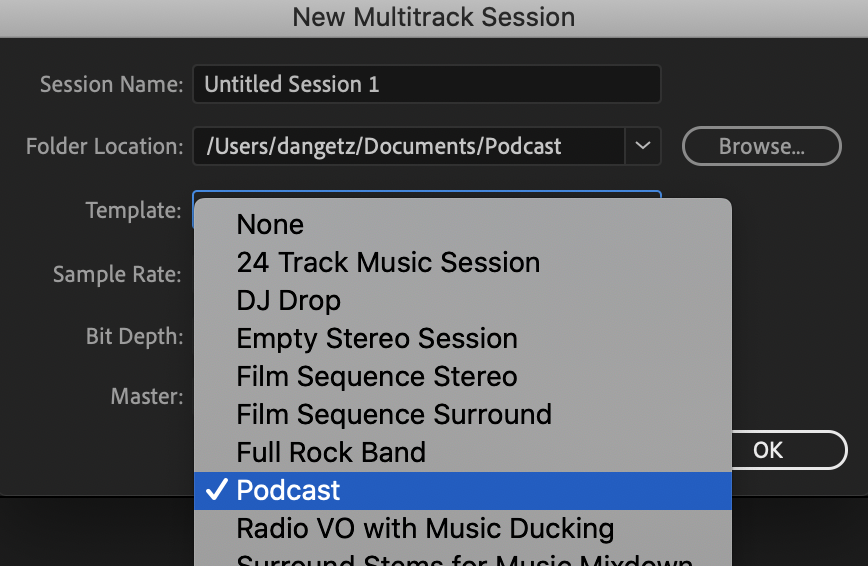

- ADOBE AUDITION PODCAST WORKFLOW PRO
- ADOBE AUDITION PODCAST WORKFLOW SOFTWARE
- ADOBE AUDITION PODCAST WORKFLOW PROFESSIONAL
ADOBE AUDITION PODCAST WORKFLOW PRO
Since I'm now getting into video production with my Canon T4i DSLR, I'm using Adobe Premiere Pro and even After Effects more often. Since Audition processes live instead of changing my raw audio, my project folders average 1/3 their size of when I use Audacity. Since Audition applies most effects as a nondestructive feature to tracks or clips, it doesn't have to process the audio until I play (live processing) or export. But adding any kind of processing in Audacity would require embedding the raw audio at an even larger size than uncompressed WAV. Unless I run a destructive effect or process my audio inside of Audition, it simply links to my external WAV files. So I've dropped several steps from my conversion workflow. Since Adobe Audition uses the Fraunhofer MP3 encoder (same as iTunes), I can make my MP3s directly from Audition.Īudition also quickly converts my source WAV files to mono and saves them for me. Since I work in mono audio, I would always add a step before all of these to convert my WAVs into a mono WAV, since iTunes would do that faster than Audacity. Delete the leftover MP3 still in the iTunes library.



ADOBE AUDITION PODCAST WORKFLOW PROFESSIONAL
So why not try this professional audio-editing software? 2.
ADOBE AUDITION PODCAST WORKFLOW SOFTWARE
Included in Adobe Creative Cloudīecause of my professional web design services, I'm subscribed to Adobe Creative Cloud, which gives me access to every Adobe creative app: Photoshop, Premiere Pro, InDesign, Illustrator, Lightroom, After Effects, and more.Īudition is also included with Creative Cloud, so it's software that I already own and doesn't cost any extra to use. Are there really benefits to Audition that are worth the big price tag? I share why Audition may be best for my podcasting workflow, but why you probably shouldn't switch. Audacity is free and Adobe Audition is $349.


 0 kommentar(er)
0 kommentar(er)
